

William Stopford
Every SUV, ute and van discontinued in Australia in 2025
5 Hours Ago
Kia dominates the people mover segment in Australia with its Carnival, the only car of its kind with a V6 engine. The Carnival is even a little – gasp! – stylish.
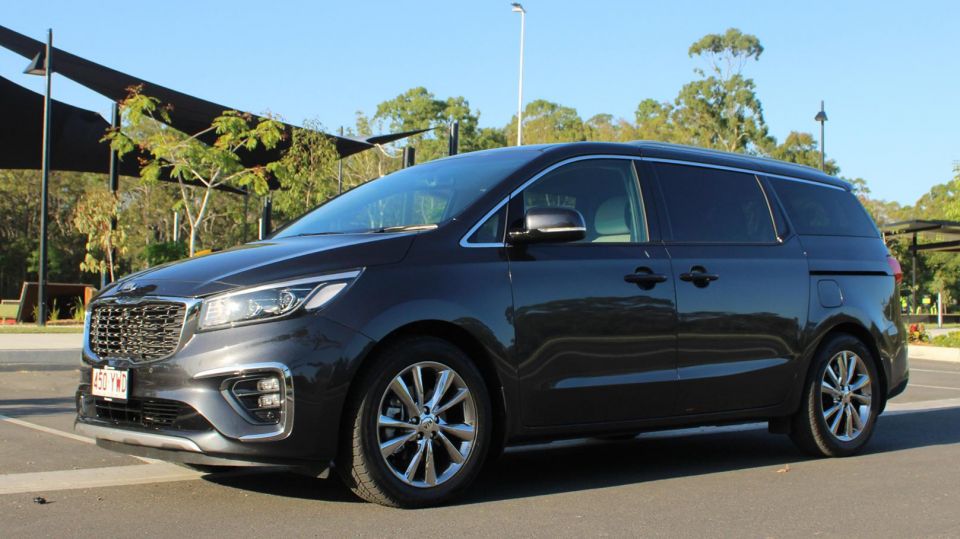
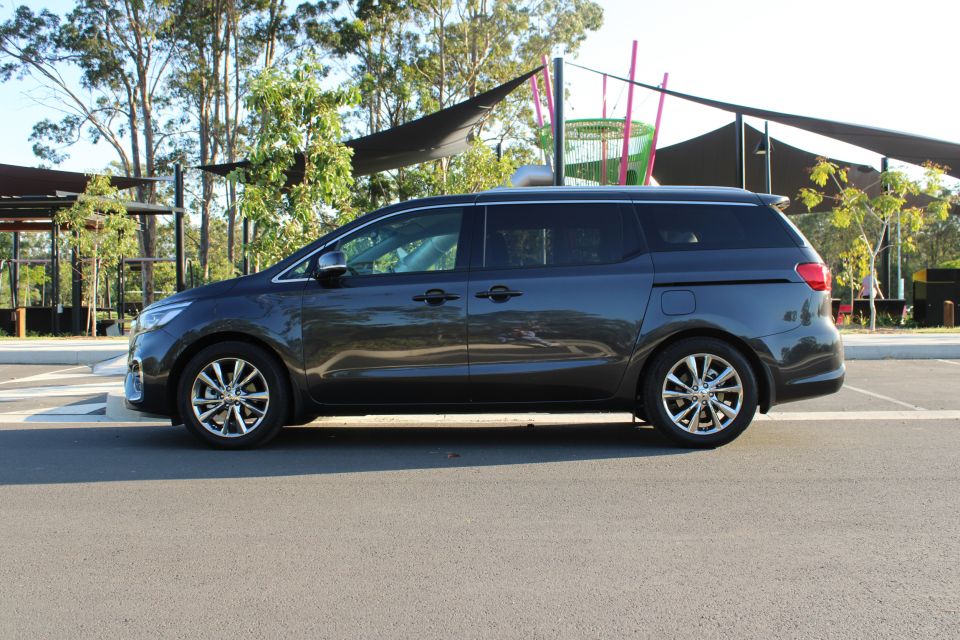

News Editor
New from
$60,290
excl. on-roads

News Editor
New from
$60,290
excl. on-roads


News Editor
New from
$60,290
excl. on-roads

News Editor
New from
$60,290
excl. on-roads
Quickly see how this car stacks up against its competition. Select any benchmark to see more details.
Where expert car reviews meet expert car buying – CarExpert gives you trusted advice, personalised service and real savings on your next new car.
Simultaneously invented by Chrysler in the US, and Matra and Renault in France, the people mover – aka MPV or minivan – enjoyed a period of popularity, only for its fortunes to sag as SUVs rose indefatigably.
SUVs can sacrifice versatility on the altar of style and be advertised as being suitable for adventurous lifestyles. But MPVs? It’s much harder to disguise the boxy shape they need, and too hard to market them as much more than dull people carriers.

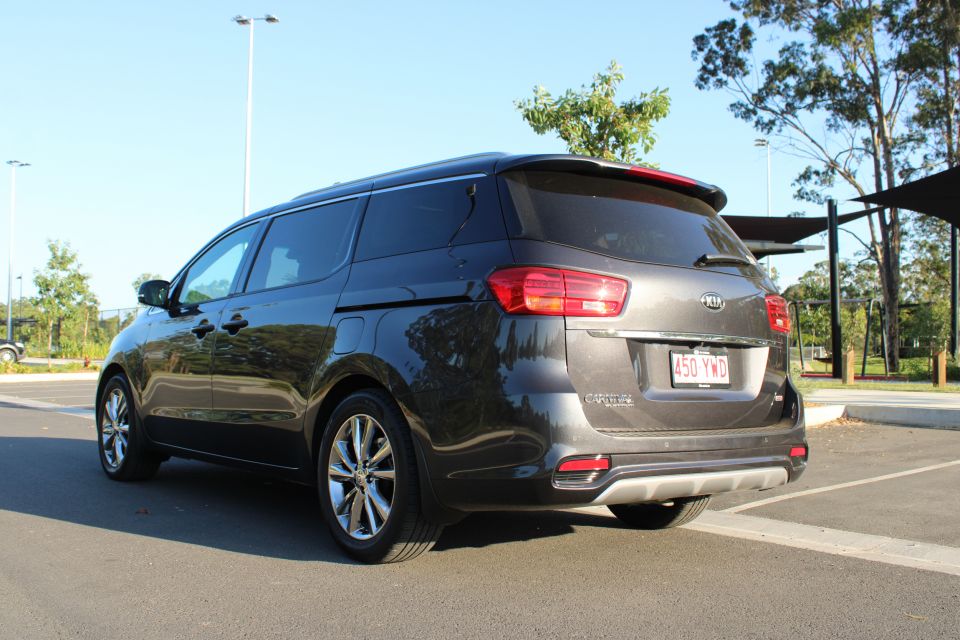
With the current generation of Carnival, Kia has tried to inject some style into the traditionally staid format.
In the US, it faces a battery of similarly-sized, V6-powered rivals from Chrysler, Dodge, Honda and Toyota.
In Australia, however, its rivals are markedly different.
The Tarago is dead but Toyota will sell you a Granvia, a new people mover based on its HiAce commercial van. Hyundai, LDV, Mercedes-Benz and Volkswagen also offer people mover versions of their cargo vans.
In the absence of an American-style rival like the Chrysler Pacifica, there’s only one Carnival competitor that isn’t based on a cargo van.
The Honda Odyssey is the only Carnival rival that’s based on car underpinnings, but it’s traded the alluring, low-slung look of its predecessors for a taller, boxier shape.
The Kia Carnival, designed under Peter Schreyer’s watchful eye, is more stylish than its rivals and has just a hint of SUV in its flanks. It’s also the only MPV at its price point with a V6 engine.
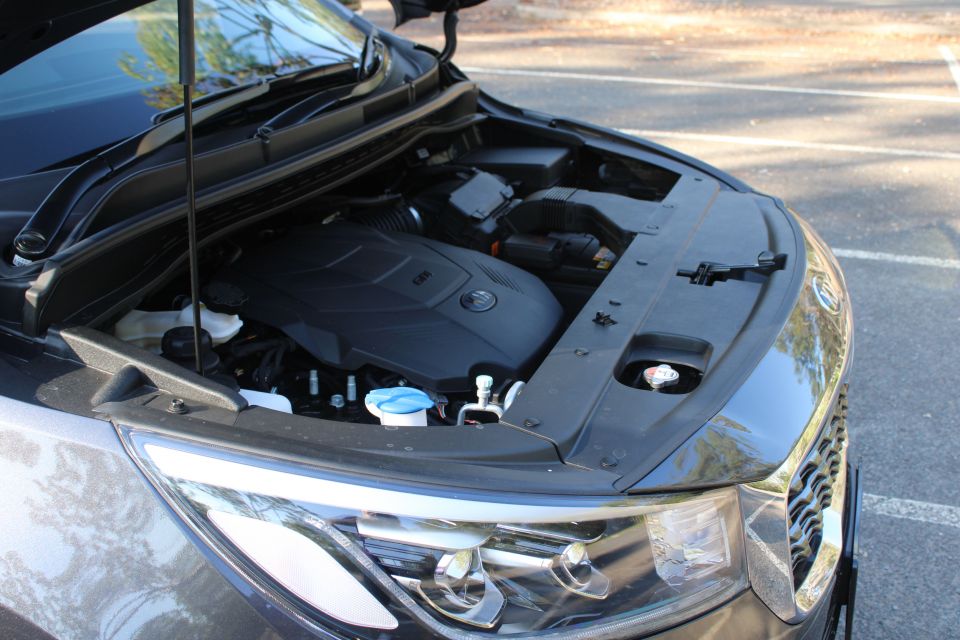
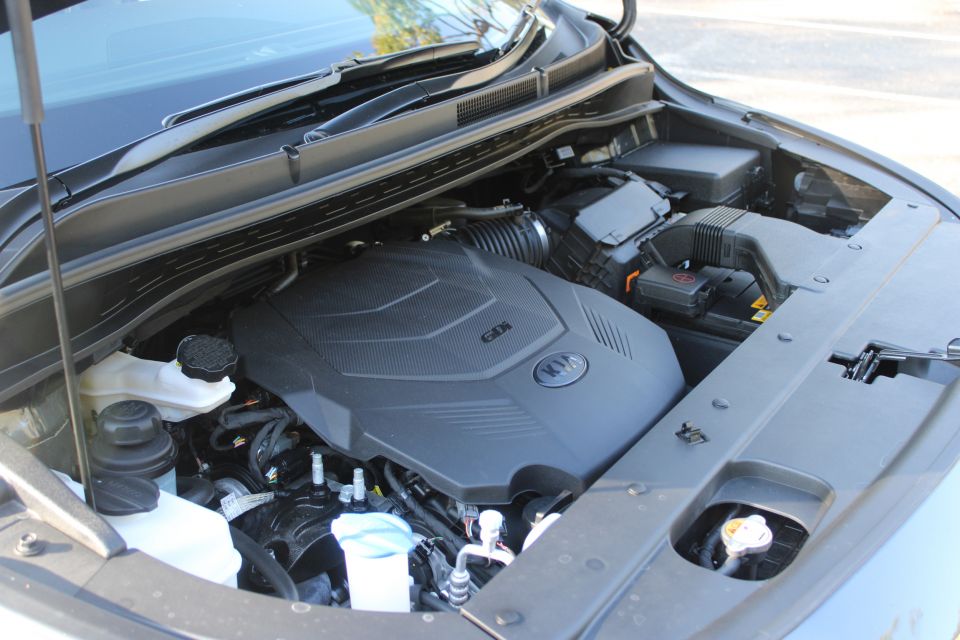
The range consists of S, Si, SLi and Platinum trims, all with eight seats and all with the option of a 2.2-litre turbo-diesel four-cylinder with 147kW and 440Nm, or a 3.3-litre naturally-aspirated V6 engine with 206kW and 336Nm.
The only transmission available is an eight-speed automatic.
Pricing starts at $42,990 before on-road costs for the S V6 and tops out with the Platinum V6, at $60,790 before on-road costs.
The turbodiesel option adds another $2500 to the price.
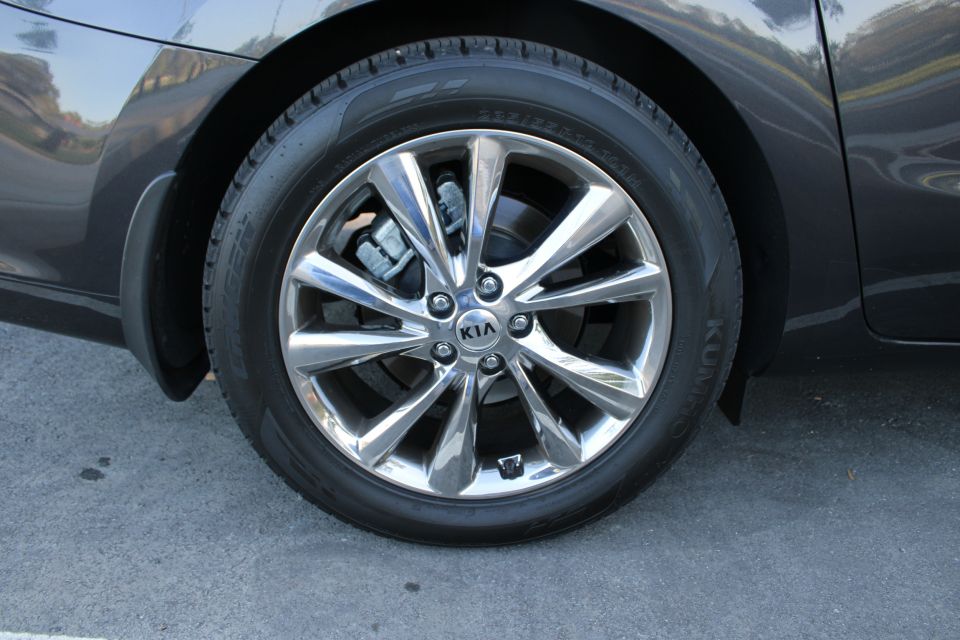

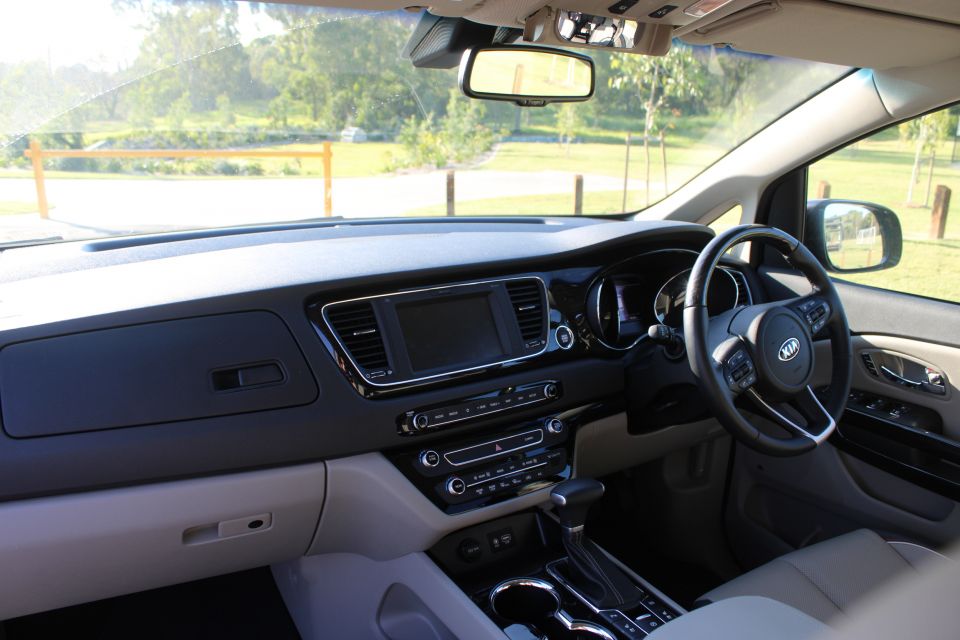
Buy your new car without the stress. It's fast, simple and completely free.

Great service from Travis and team, second time I have used this business would not hesitate to recommend them to anyone
Craig C.
Purchased a Ford Ranger in Sunshine Coast, QLD
CarExpert helped Craig save thousands on his Ford Ranger, now let us save you on your next new car.
Find a dealIn range-topping Platinum trim, you get plenty of kit. That includes a 360-degree camera view, second- and third-row sunshades, a 7.0-inch screen in the instrument cluster, a heated steering wheel, and heated and ventilated front seats with eight-way power adjustability.
There’s also powerful LED headlights and chrome-finished 19-inch alloy wheels, the latter a very American touch.
All this is in addition to features found in less expensive variants, such as an 8.0-inch touchscreen infotainment system with satellite navigation, Apple CarPlay and Android Auto, as well as power sliding doors and tailgate, proximity entry and push-button start, tri-zone climate control, front and rear parking sensors, and an eight-speaker JBL premium sound system.
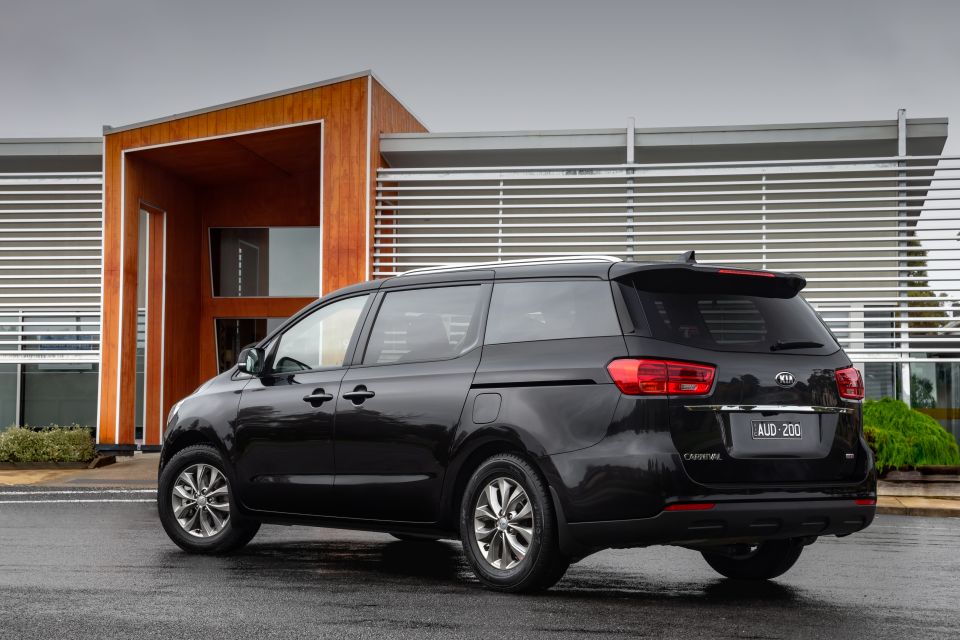
What’s missing in the Carnival, however, is a rear-seat entertainment system. There are some blank switches at the back of the centre console which reveal this as an option overseas.
All Carnivals have autonomous emergency braking, forward collision and lane departure warning, and curtain airbags for all three rows.
The Platinum adds blind-spot monitoring and rear-cross traffic alert.
When it was tested by ANCAP in 2016, it received a rating of five stars.
Virtually no crossovers sold in the Australian market can comfortably seat two adults in the rearmost row, especially not for long trips.
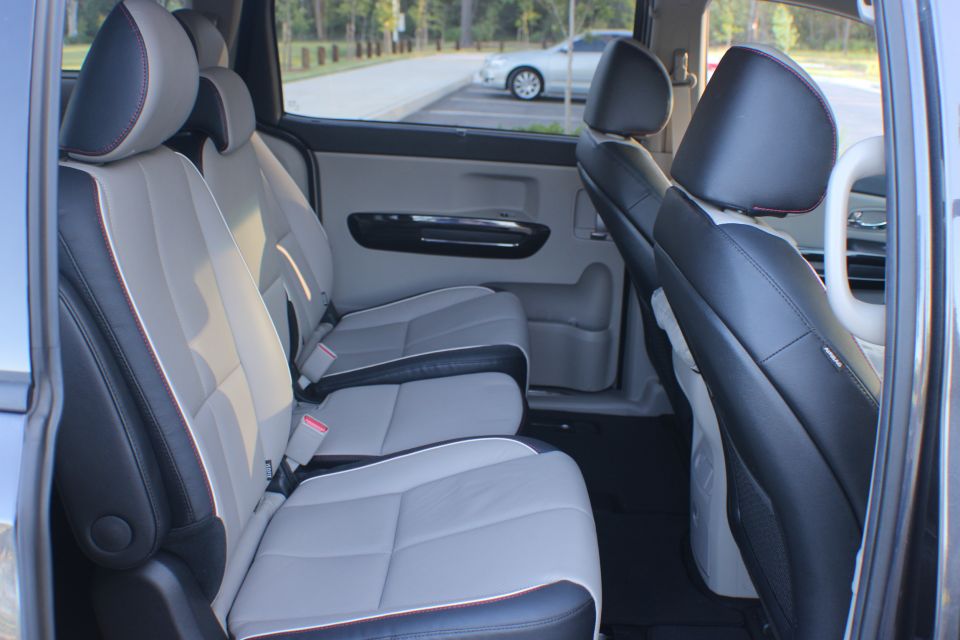
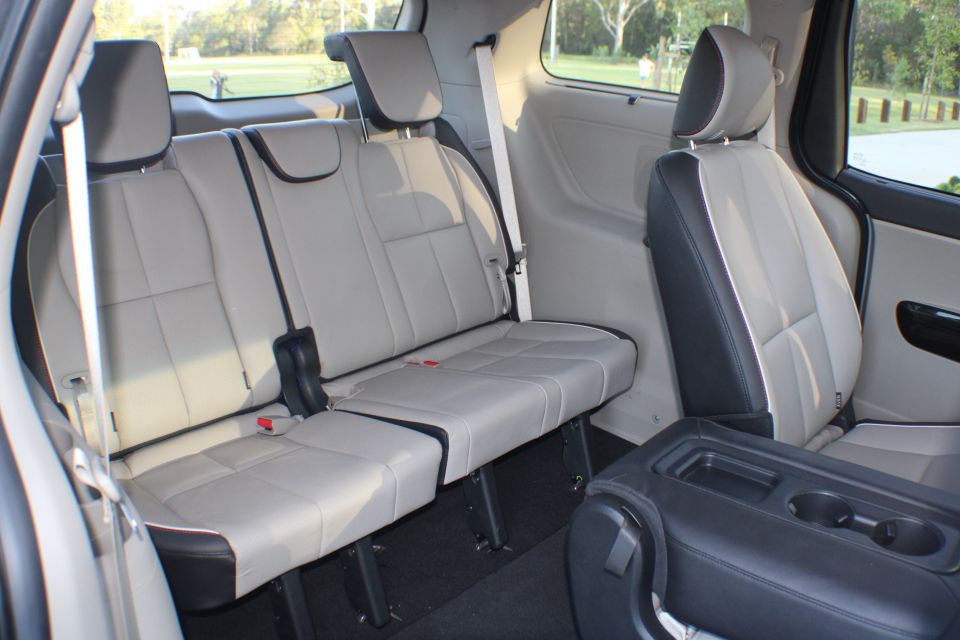
That’s where the Carnival shines, with ample headroom and legroom in all three rows. The spacious feeling is aided by a large greenhouse and the classy two-tone grey colour scheme.
It’s so spacious there’s even a four-row variant available in some markets.
Unlike many crossovers, the third row isn’t a penalty box lacking in space and natural light.
It also splits and folds flat into the floor. It’s a simple process — once you push the headrests down, pull a handle and a strap simultaneously on one section of the third row and then do the same on the second section.
The middle row consists of two captain’s chairs that slide and recline. The centre seat is separate and can be folded down to make a table of sorts or removed.
You’ll also find four top tether and three ISOFIX anchor points in the cabin.
The outboard middle row seats fold up and against the front seatbacks, but don’t fold flat into the floor.
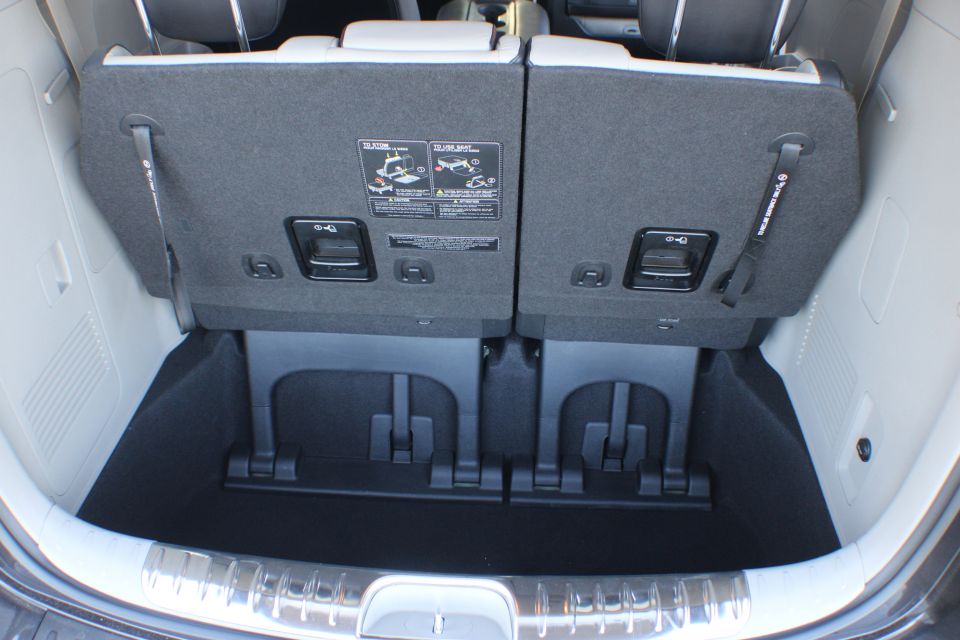
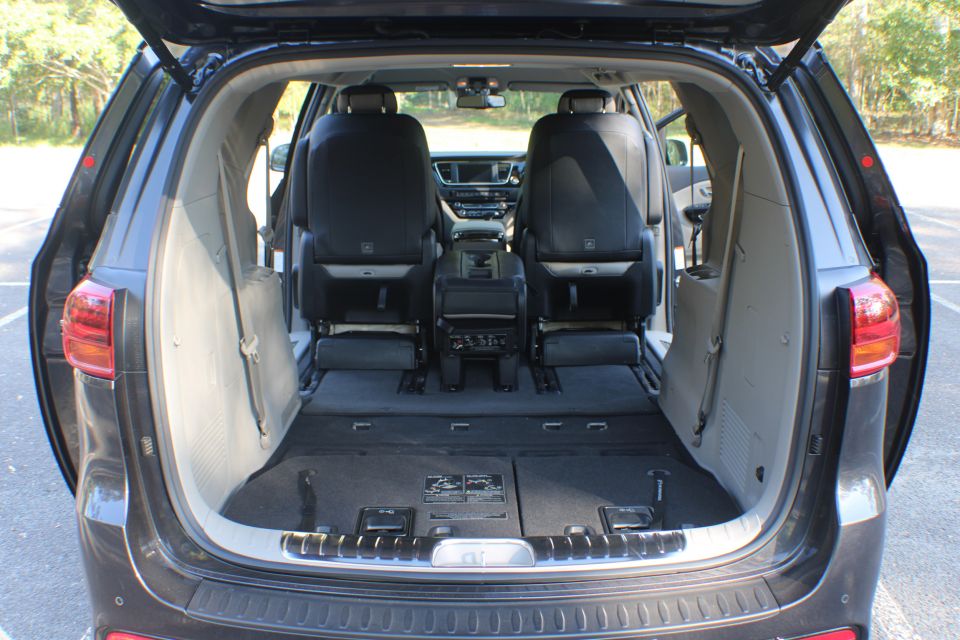
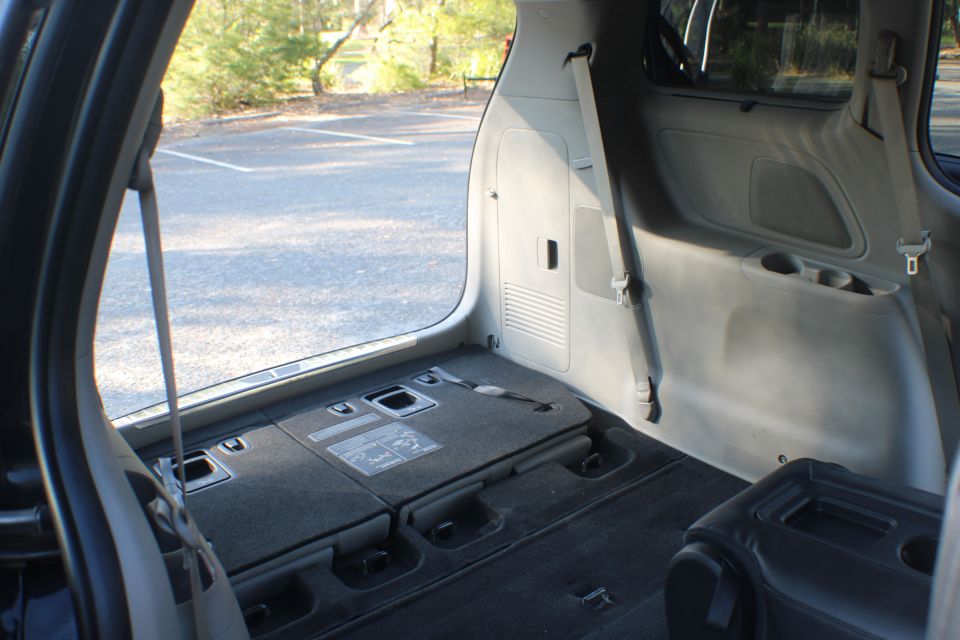
Nevertheless, the Carnival is cavernous. With all seats folded and the centre middle seat removed, total cargo volume is 4022L.
With the seats up, there’s still ample boot space at 960L. It’s a deep cavity, too, as this is where the rear row is stowed.
This is a car clearly aimed at the US market. The easiest way to tell is by counting the cupholders: 12.
They’re properly-sized, too. The two in the centre console can even fit a 1L bottle of water.
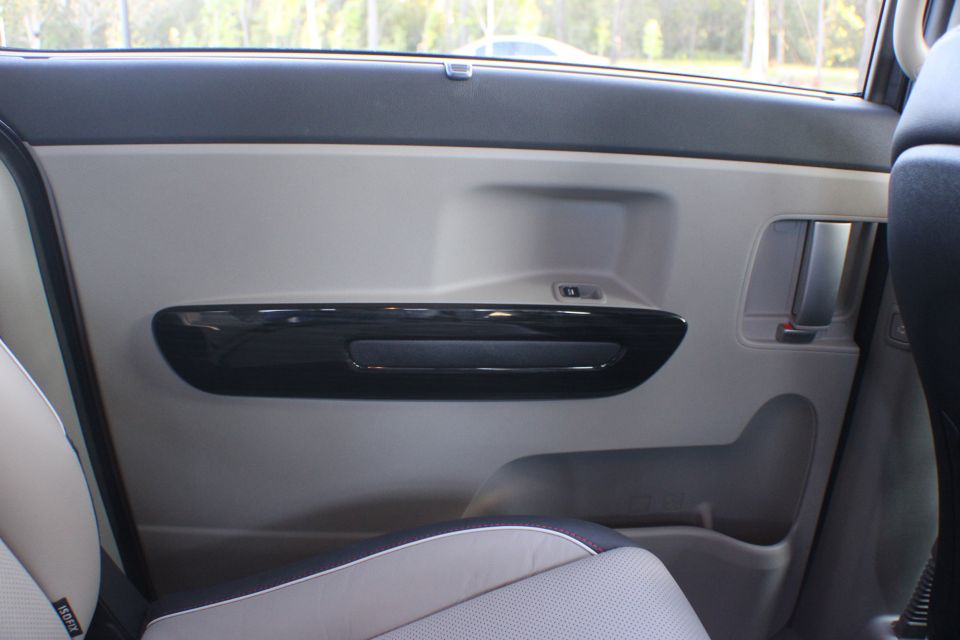
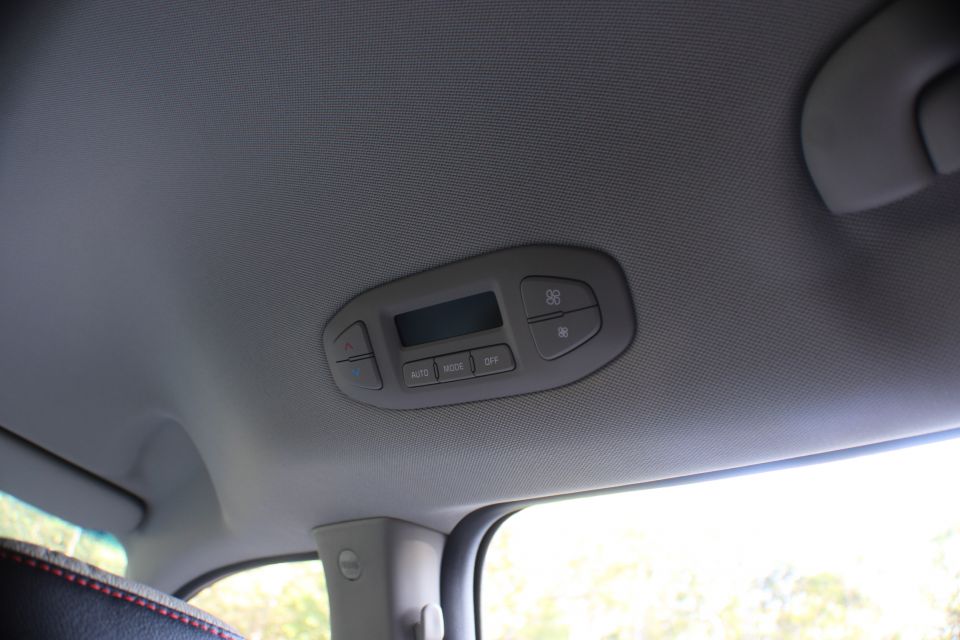

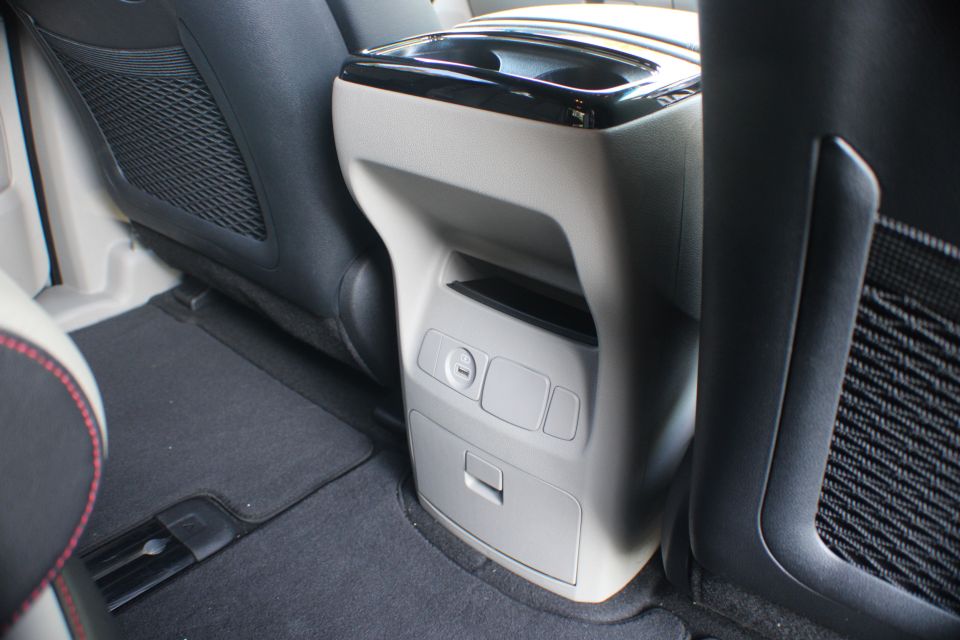

The car could do with some more USB outlets, however, with just three in the cabin – at the base of the centre stack, inside the centre console, and behind the centre console.
There are only three 12-volt power outlets, too, with one up front, one inside the centre console and one in the cargo area.
Next to the rear-view mirror, where you’d typically find a sunglass holder, there’s a drop-down “conversation mirror”.
This gives you a slightly better view of the cabin to allow you to more easily reprimand errant children.
The sunglass holder, detachable and covered in a felt-like material, sits in the cavernous centre console bin.
Additional storage includes cubbies like a dashboard compartment situated above the cooled glove compartment.
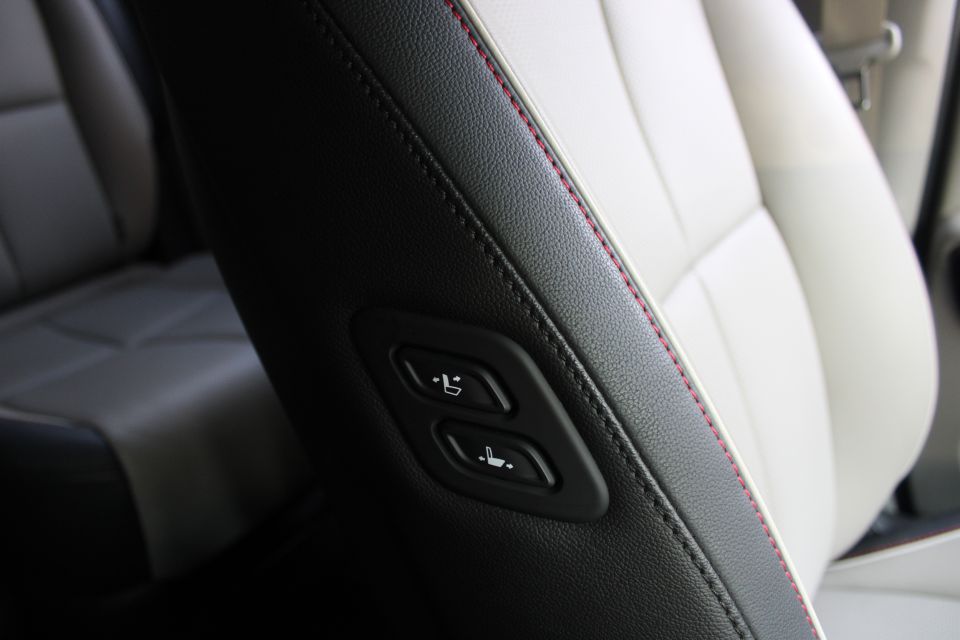
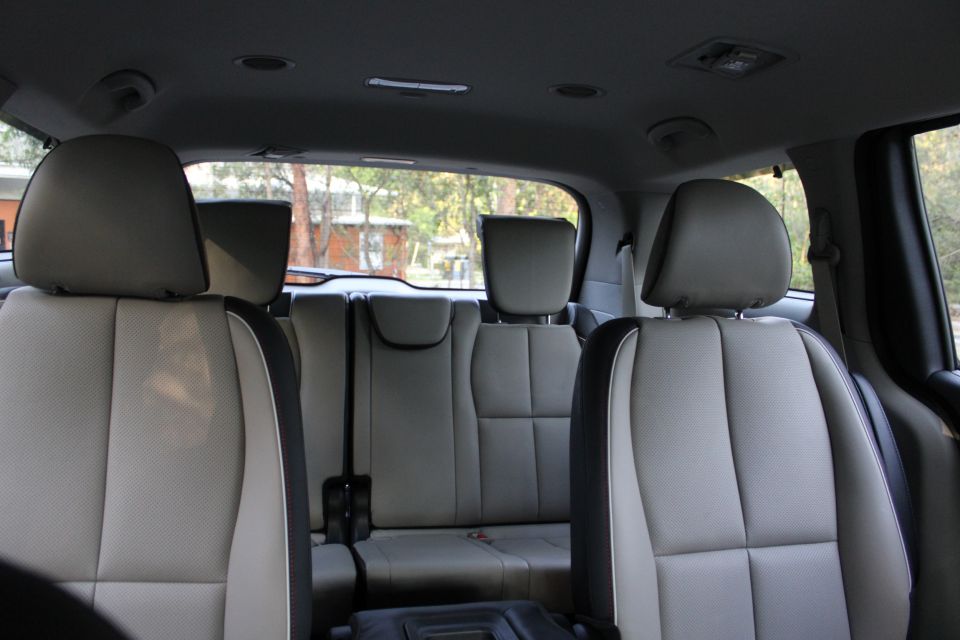
Naughty children can easily annoy the front-row passenger by pressing the buttons on the side of their seat to move their seat back and forward. There doesn’t seem to be any way to lock this feature.
Conversely, the tailgate can only be opened if you turn the engine off, though you only have to be in Park to open the sliding doors. These can be controlled via switches near the conversation mirror.
There’s a smart tailgate feature that can be activated, which allows you to open the tailgate by standing close to the car provided it has been switched off and locked for at least 15 seconds.
The power-operated tailgate and sliding doors will no doubt prove convenient for multi-tasking parents, but the doors in particular are slow.
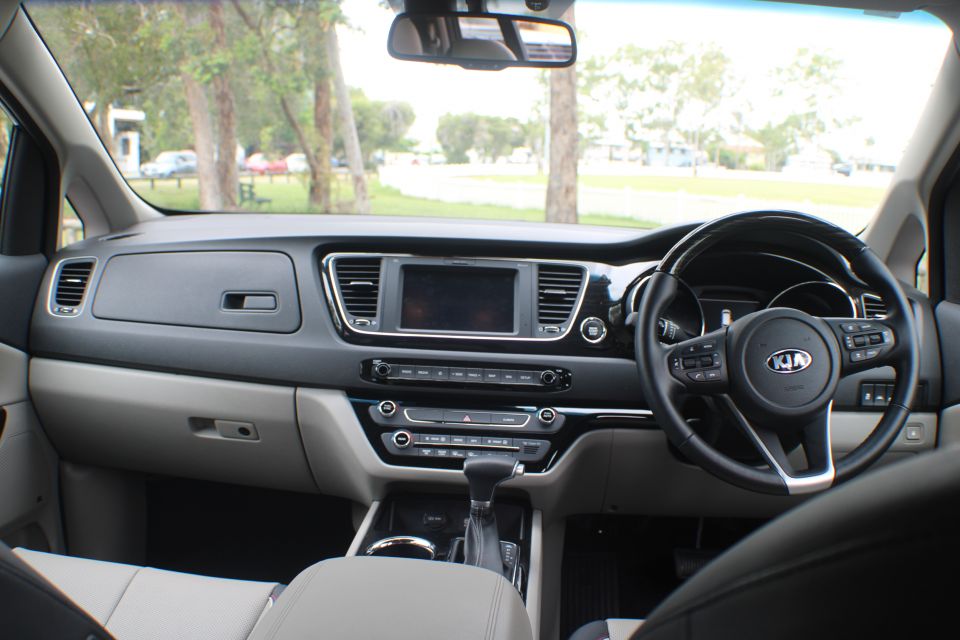
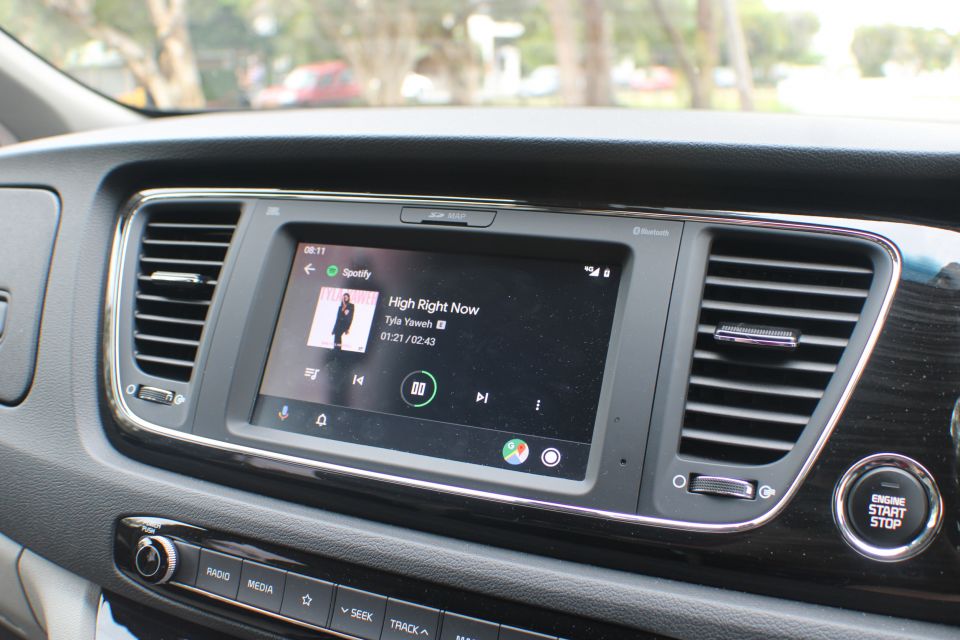
The dashboard is clean and elegant, with logically arranged, legible switchgear and an 8.0-inch infotainment system.
The subtle red stitching on the seats is a nice touch, as is the dark fake wood trim
The faux wood is splashed across the top of the dashboard and around the touchscreen, though puzzlingly Kia uses visually similar piano black trim elsewhere on the dashboard.
It’s a minor detail, but why not just use one or the other?
As with all Kias, the infotainment system is hard to fault. It boasts a crisp interface and excellent useability.
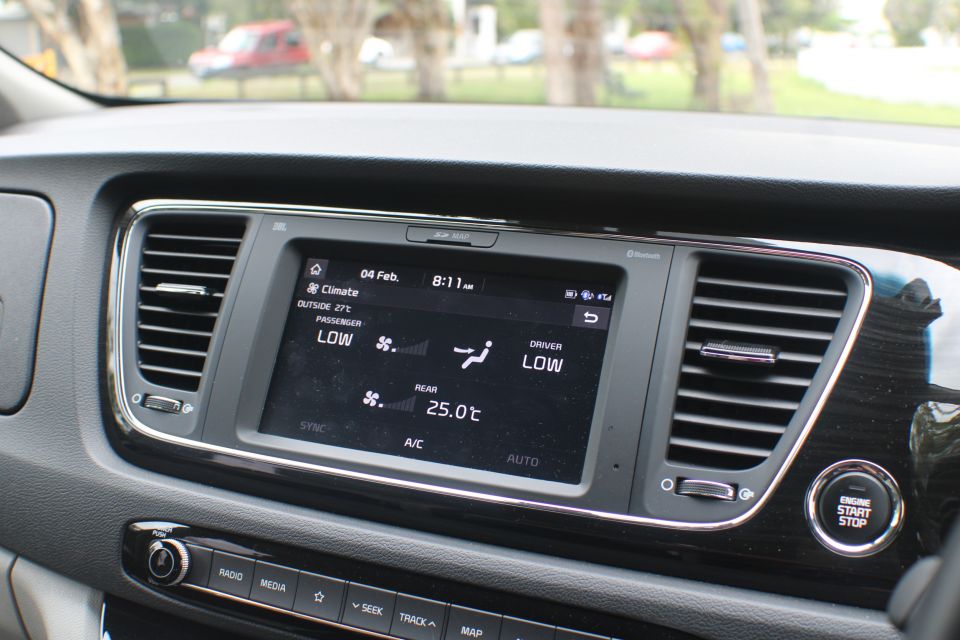
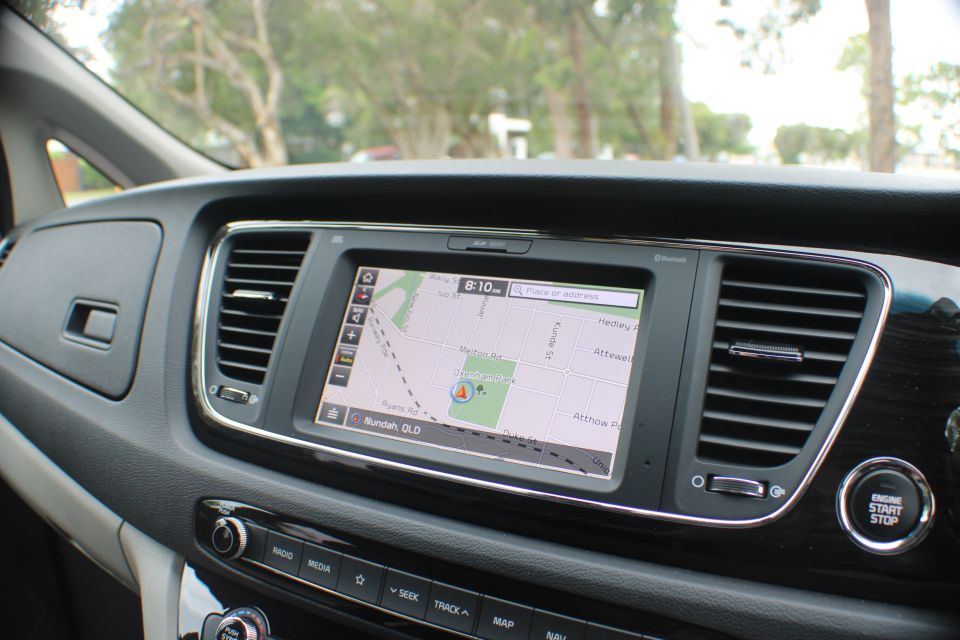
The switchgear is shared across much of the Kia range, though some items – like the knobs on the steering wheel and the indicator stalks – are older items from the Kia parts bin and not as tactile as items you’d find in, say, a Stinger.
Build quality is solid but for an occasional creak from one of the second row seats which only occurred when turning a corner.
Another issue occurred in a car park one day. A loud beeping noise sounded in the cabin, almost as loud as the horn itself. And yet, there were no warning messages in the instrument cluster or on the touchscreen, and only restarting the car would stop it.
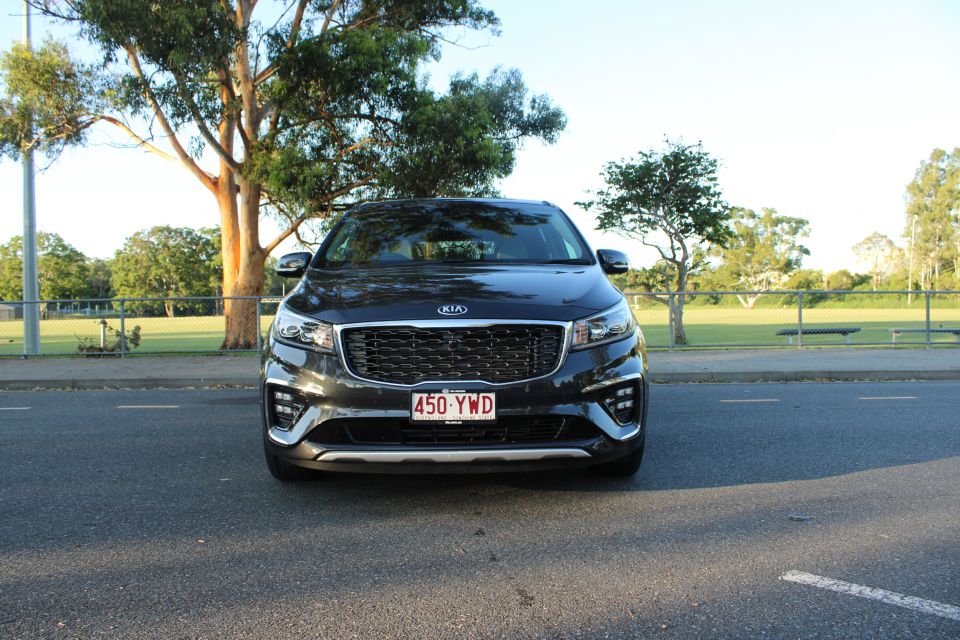
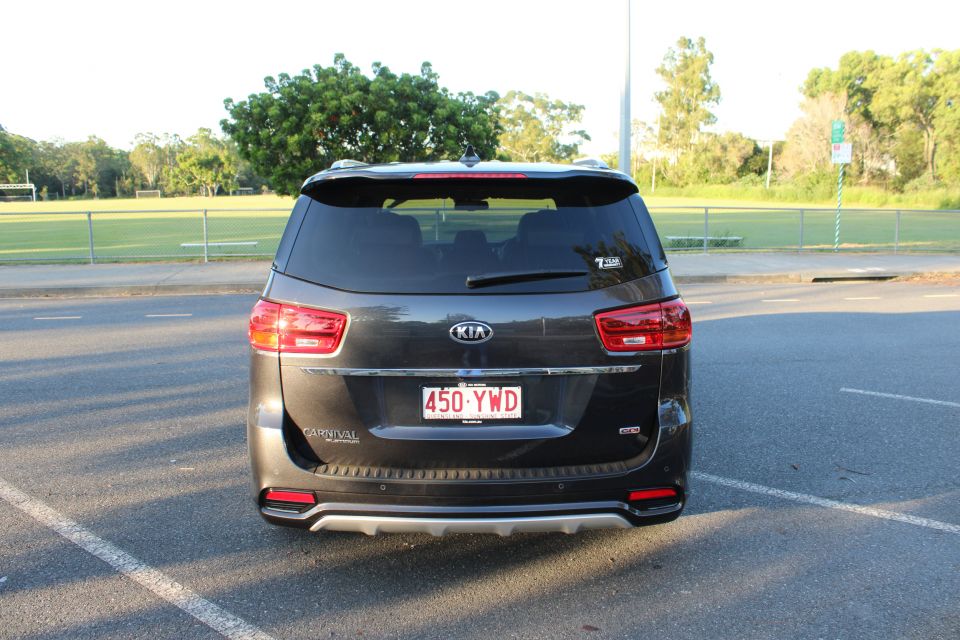
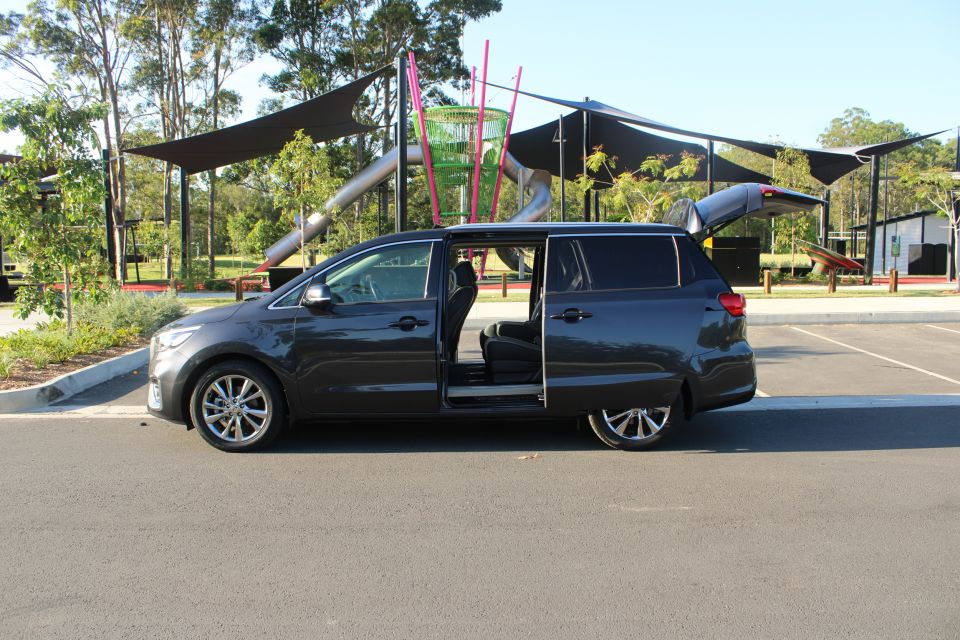
At some point as a Carnival owner, you’ll no doubt have to cover some long distances – an away game for your kid’s footy team, or a road trip to visit relatives.
It’s on these long drives where the Carnival disappoints.
For starters, the seats lack support. They’re flat and firm and only the driver’s seat has adjustable lumbar.
It doesn’t really help. After a few hours of driving, my back was hurting.
This was even after finding what I’d thought was a comfortable seating position with the seat positioned as close to the floor as possible.
At any point higher than that, my shin was hurting due to the angle of the seat.
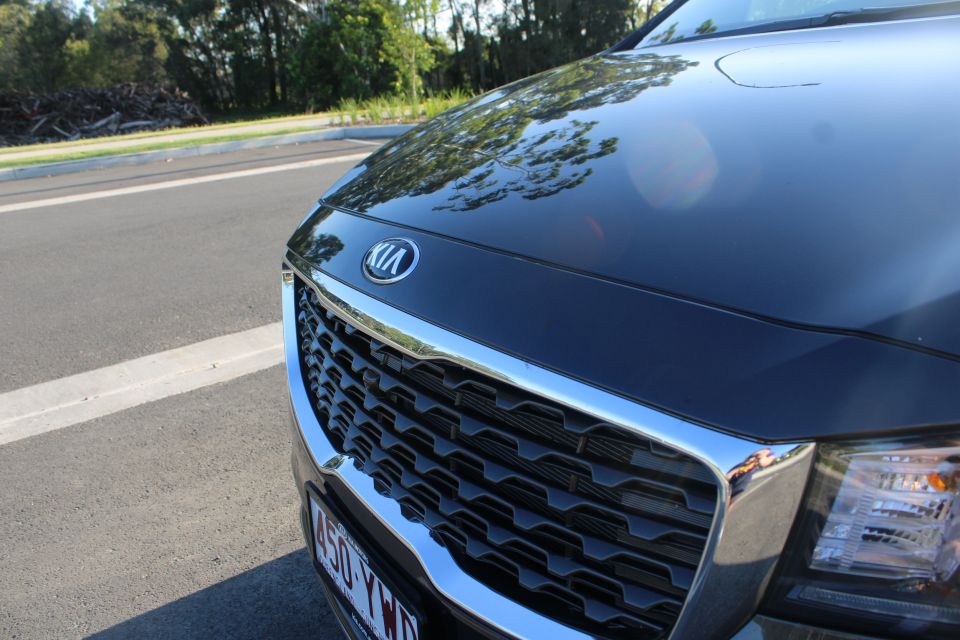
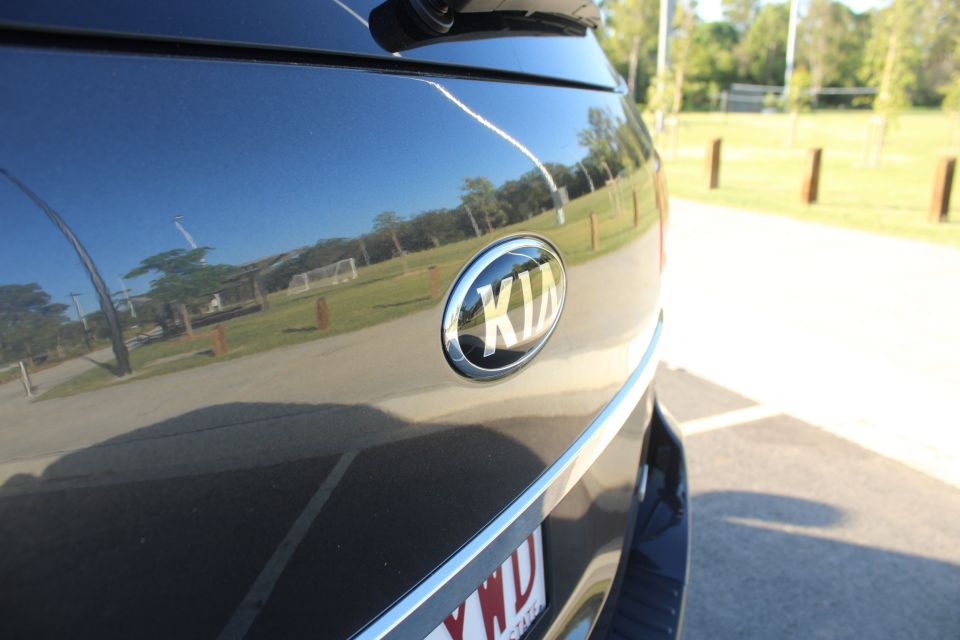
On even fairly smooth rural roads, the Carnival exhibits too much suspension travel.
At high speeds, the floaty ride becomes a liability as the car bobs after hitting even slight imperfections in the road.
The Carnival takes too long to recover, the feeling almost nautical.
Passengers confirmed the sensation was even more pronounced when sitting in the second and third rows.
The Carnival’s dimensions also make the car a handful on narrower roads. It’s a big car and never shrinks around you.
Unlike cheaper Kias, the Carnival uses hydraulic power steering and therefore isn’t available at all with lane-keeping assist.
Considering its sizable footprint, the Carnival is arguably the one Kia where said feature would be the most useful.
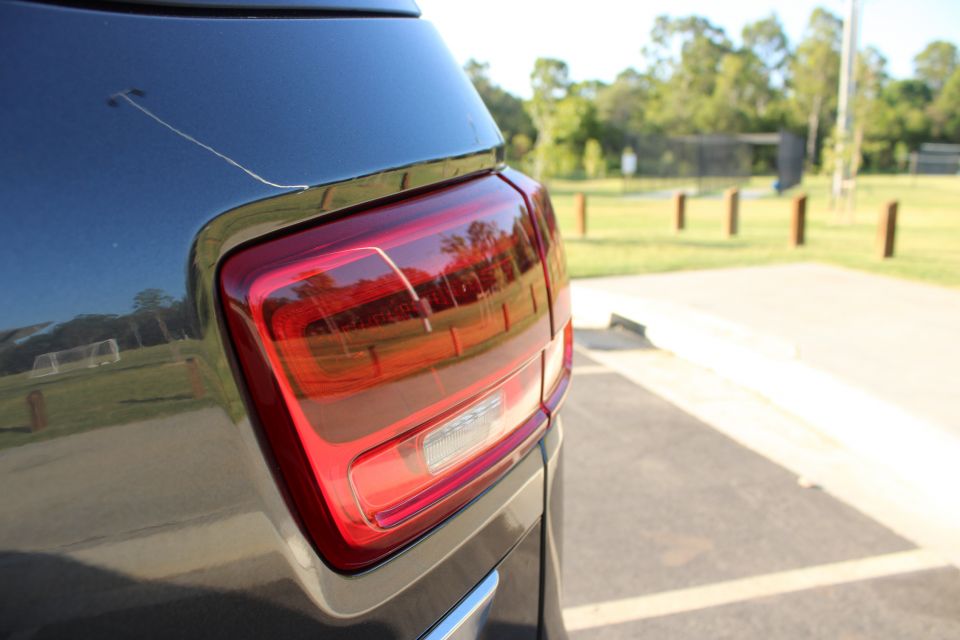
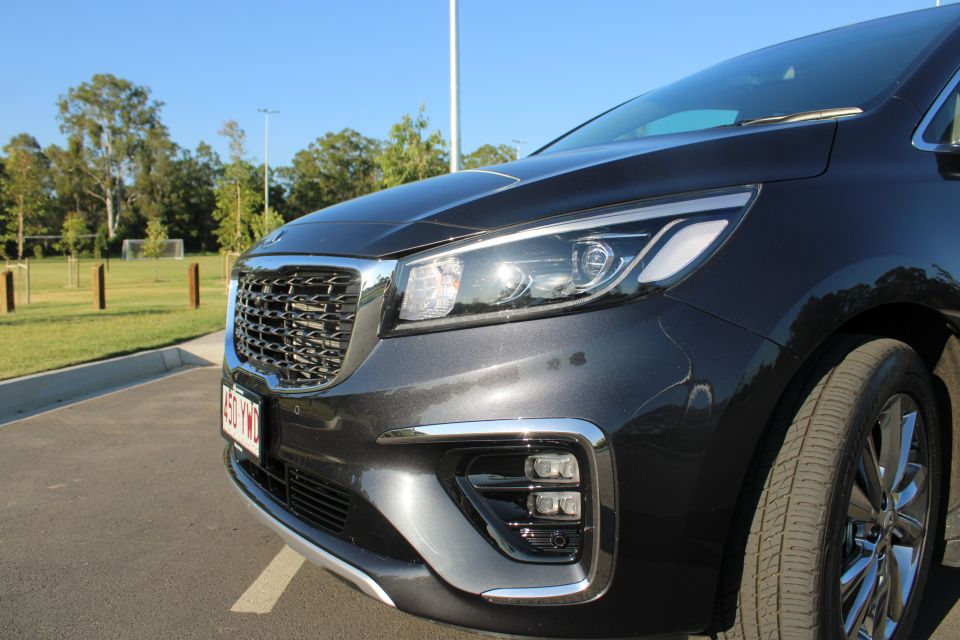
Where expert car reviews meet expert car buying – CarExpert gives you trusted advice, personalised service and real savings on your next new car.
A feature that does help you place the vehicle is the camera system.
The 360-degree camera makes parking a breeze. You can also activate the camera view at any point.
While driving, it’ll display the rear camera view but at low speeds or near other vehicles, you can toggle between the different cameras on the car.
This is especially useful if you’re new to such a large vehicle and have trouble lining it up in a parking space.
In urban driving, such as during the school run, the Carnival is pleasant. Think more Kia Sorento, less Carnival cruise ship.
There’s some slight shuddering over larger bumps but – gargantuan dimensions aside – it’s a comfortable car to drive.
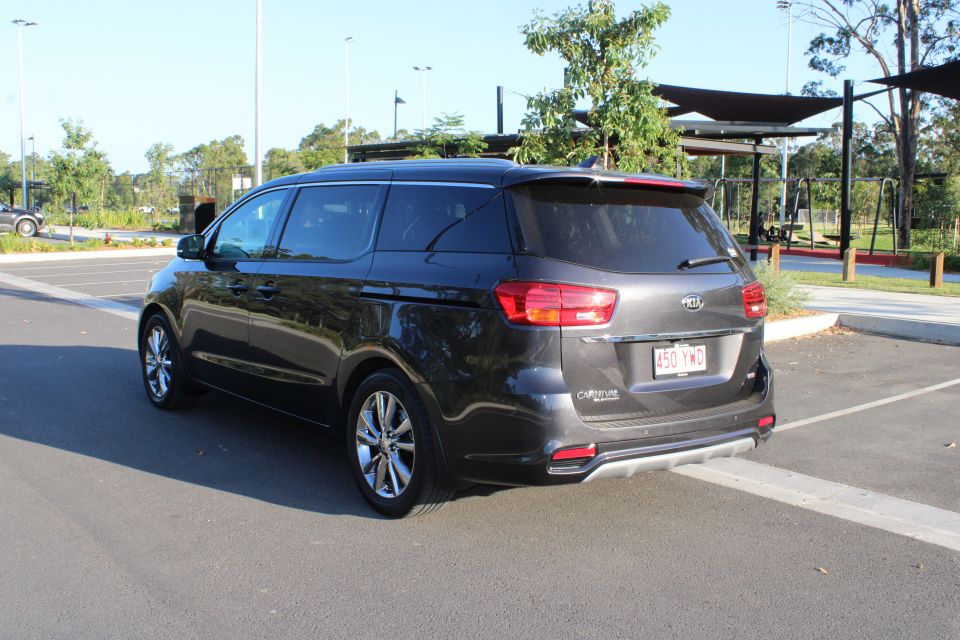
The steering is light but helps make the Carnival feel more manageable.
The Carnival’s brawny V6 means the big people mover never feels gutless. Though it doesn’t feel overwhelmingly powerful, there is some torque steer.
The Carnival lacks drive modes that adjust both steering and throttle response, though there’s both an Active Eco mode and a manual shift mode which you may want to use while driving through the mountains.
On steeper grades, however, the Carnival reveals a sizable gap between second and third gears. It revved frantically in second gear while third gear had the car straining to climb hills.
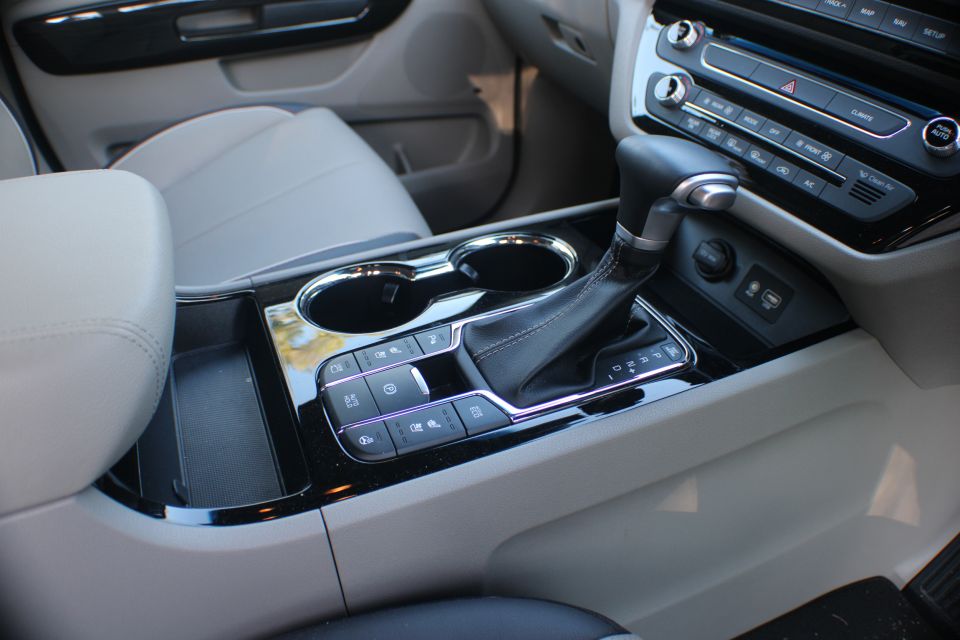

The eight-speed automatic, introduced for 2019, is otherwise a well-matched transmission for the car.
The V6 engine sounds great for a people mover and is certainly more aurally pleasing than rivals’ four-cylinder engines.
Unlike many modern V6s, however, it lacks any kind of economy-aiding technology like cylinder deactivation or automatic stop-start.
During a week of mostly urban driving, the Carnival managed 13L/100km. That’s not too shabby.
Resetting the trip meter and spending a weekend on highways and in the countryside resulted in overall fuel economy of 12L/100km.
Kia claims a combined average of 10.8L/100km, which the Carnival fell slightly short of. Urban and highway driving averages are 14.5L/100km and 8.7L/100km, respectively.
Opting for the diesel slashes fuel economy to 9.9L/100km city, 6.3L/100km highway and 7.6L/100km combined.
Considering the diesel commands a $2500 premium, it might be worth doing your sums to see if it’s worth it.
In addition to its seven-year, unlimited-kilometre warranty, Kia also offers seven years of capped price servicing on the Carnival.
The average cost of a service over the seven year period is $520, almost identical to that of the turbo-diesel model.

In Australia, where there’s a dearth of crossovers with an adult-sized third row, the Carnival’s blend of style and space has proven a winner.
Last year it outsold the people mover segment’s second-placed finisher, the less powerful, homelier Honda Odyssey, by more than three-to-one.
Against its rivals, the Carnival makes a strong case, though the Platinum is a particularly decadent option with a price almost $20,000 higher than the base model.
While the 360-degree camera is a boon for parking and blind-spot monitoring is a valuable safety feature, you can still get a powered tailgate and sliding doors in the SLi for $7800 less.
If an adult-sized third row isn’t a must-have, you may also find a large crossover to be a superior purchase.
Spy photographers recently captured a redesigned Carnival in testing. If Kia can address the current car’s key issues – chiefly its seats and high-speed ride quality – the Carnival deserves to maintain its stranglehold on the Aussie people mover market.
Where expert car reviews meet expert car buying – CarExpert gives you trusted advice, personalised service and real savings on your next new car.
William Stopford is an automotive journalist with a passion for mainstream cars, automotive history and overseas auto markets.


William Stopford
5 Hours Ago


Ben Zachariah
6 Hours Ago


Derek Fung
7 Hours Ago


Matt Campbell
13 Hours Ago


William Stopford
1 Day Ago


Josh Nevett
1 Day Ago